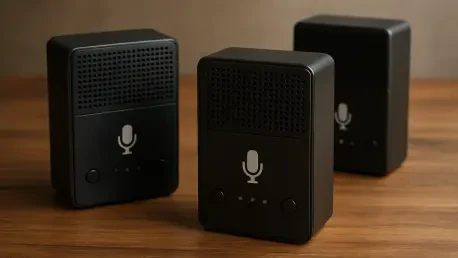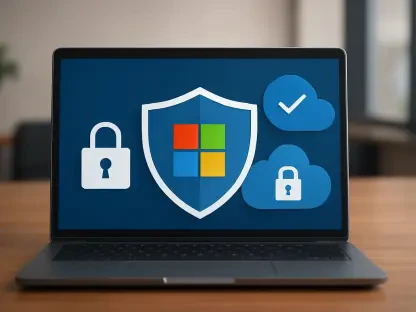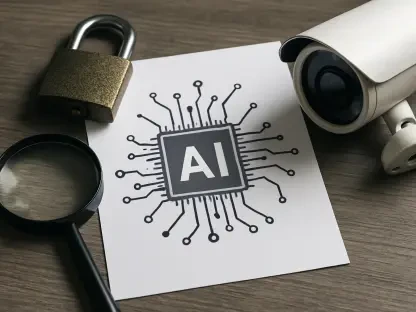For years, a familiar voice on the phone was as good as a signature – executives, partners, and customers could be recognized by tone alone. But the ground has shifted. AI can now clone voices from just a few seconds of audio, making impostors sound nearly identical to people you know. Generative models synthesize speech that bypasses caller ID and even voice biometrics. In this new threat environment, the old assumption that “hearing is believing” no longer holds. A single deepfake call can cost a business six or seven figures by imitating a CEO or vendor.
In this article, you will learn why the old voice authentication playbook is broken, how to treat voice cloning as an identity-wide challenge, which verification signals matter most now, and how to equip your people to defend against deepfake vishing (voice phishing).
The Old Norm No Longer Holds
Before prescribing solutions, you must acknowledge the system change. Traditional voice authentication, such as call center passphrases or “trusted caller” practices, rewarded familiarity and context. It worked because mimicking someone’s voice was difficult, and it was assumed that a call from a known number or with correct personal details meant the speaker was genuine. All that has changed. AI-generated voices collapse this trust funnel. One synthesized audio clip can impersonate your CEO’s request, your supplier’s confirmation, or your own help desk staff – without any of the telltale signs of fraud. If trust lives only in the sound of someone’s voice, it gets flattened by a good deepfake.
Crucially, legacy voice ID methods are now fully defeated by AI. As OpenAI CEO Sam Altman warned in mid-2025, some banks still accepting voiceprints for client authentication is “a crazy thing to still be doing” because AI has “fully defeated” that control. In other words, a spoken password or voice-match system that once added security may now be a single point of failure. Attackers have realized this. High-profile heists prove it:
A UK energy firm was defrauded of $243,000 in 2019 by a phone call deepfake of its CEO.
In 2020, a Hong Kong bank manager transferred $35 million after what he thought was a director’s voice instructing him to do so.
In 2024, a UAE employee nearly sent $25 million after a deepfake video call with “executives” who turned out to be impostors. (It wasn’t just a voice – every participant was AI.)
Each incident shows how current controls break down. Voice alone is no longer a verifier of identity. Caller ID can be spoofed. Even voice biometric logins without robust liveness tests are vulnerable to replay. The old playbook of trusting, confirming a few personal details, or recognizing a familiar timbre is broken. This is a call to rebuild identity assurance for a world where any voice can be cloned.
Voice Cloning Is an Identity Strategy Issue
This shift touches the entire enterprise. Voice cloning can’t be treated as just a minor fraud tweak or an IT problem – it’s an identity strategy issue. A deepfake call tests your policies, procedures, and people across departments, not just your phone system. When an AI imitates “the boss” or a client, it exploits cracks in your identity proofing and verification workflow, from HR protocols to finance approvals.
In practice, treating voice cloning as an identity-wide challenge means every channel of communication is training data for attackers – and defenders. A fraudster may scrape LinkedIn webinars for your VP’s voice, then call your sales team with convincing context. Are your teams prepared? Does your onboarding include awareness of voice deepfakes? Do your transaction approval workflows assume a voice can lie? If not, the entire identity program is at risk, not just one phone call.
Put simply, voice cloning threats test your “identity truth,” not just your telephony. The organizations that fare best will be those that push this issue out of a narrow silo (for example, the call center) and into the broader security strategy. Everyone who handles sensitive actions initiated by a voice needs to know the plan. And that plan must adapt how you authenticate and verify using multiple signals, not just voice.
Verification and Signals Must Go Deeper
Older security metrics – like whether a caller knew a PIN or answered a knowledge question – won’t tell you if that caller is human or a deepfake. Identity assurance now demands new visibility into every voice interaction.
In practical terms, verification must go from one-dimensional to layered. For example, if an executive calls in with an urgent request, a resilient process might require at least two channels of confirmation – say, voice plus a text or email confirmation. If a customer uses voice biometrics to access an account, the system should employ liveness detection to ensure it’s not a recording or an AI-generated voice. Biometric signals must be augmented with behavioral and contextual signals: Is the speaking style consistent? Is the request typical for this person? Models can perfectly clone tone, but they may not mimic hesitation, background noise, or timing in the same way a real caller would.
Security leaders should also instrument new metrics. Track the frequency of “challenge-response” verifications on voice requests – how often do employees or systems invoke an extra challenge, and what’s the success rate? Monitor for patterns: for instance, if multiple departments report similar strange voice requests, do you connect the dots? Consider using acoustic fingerprinting or AI-based voice anomaly detection for critical channels. These tools can flag when a voiceprint doesn’t quite match the historical profile or when audio characteristics hint at synthesis. The goal is to strengthen the backbone of identity data, including clean contact information, up-to-date authorized caller lists, and agreed-upon code phrases for top executives.
Ultimately, verification logic must adapt. By deepening your verification signals now, you make it far harder for a fake voice to masquerade as a real identity.
Defenders Are the Make-Or-Break Layer
Technology alone won’t save – your people are the make-or-break layer of defense. No tool can replace the gut instinct and judgment of a well-trained employee who senses, “This request doesn’t feel right.” Frontline defenders like call center reps, executive assistants, financial approvers, and IT help desk staff are often the last gatekeepers against voice impostors. They decide which requests get an extra check, which get flagged to security, and how to handle a caller who pressures them to skip protocol. Yet many staff members have been conditioned to prioritize customer service and obey senior voices, not to challenge them. Social engineers know this, which is why they impersonate CEOs and VIP clients – they count on the deference that comes with such titles.
To turn your human layer into a strength rather than a weakness, equip them with a “voice clone resilience” kit. This should include plain-language guidelines and quick-reference tools so they can act confidently when faced with a suspicious call. For example, provide a one-page protocol for verifying identities: instruct employees that it’s not just allowed but expected to call back a purported executive on a known number or to ask a verifying question when something seems off. Give them training on deepfake tell-tales (for example, slight robotic timbre, unusual pauses) and a short glossary of terms so they understand what “voice spoofing” means. Include a list of “if and then” plays: If someone demands an urgent fund transfer via phone, then require a secondary sign-off and an email confirmation – no exceptions.
Importantly, create a culture that rewards verification. If an employee thwarts a voice scam by insisting on that extra email check, celebrate it. Make “trust, but verify” a mantra in the team. Add a “voice challenge” drill to your regular security awareness program: simulate a fake voice call (perhaps using an actor or even AI in a safe setting) and let staff practice the correct response. The human layer is where all your other controls either come together or fall apart. In breaches studied, when things go wrong, it’s often because a well-meaning person bypassed a control under pressure.
With a well-equipped human layer, you transform each employee from a potential weakest link to a critical sensor and responder in your defense system.
Build a Voice-Clone Resilient Security Program
AI-driven voice fraud is already rewriting the social engineering playbook. Quietly and insidiously, impostors are deciding who gets trusted, who gets scammed, and how far a fake persona can infiltrate your business. If your organization “speaks” with mixed signals – meaning if your policies and people give attackers wiggle room – you may find yourself a victim, summarized into compliance. If, instead, you speak with clarity and verification at every turn, you’ll force the fakes into the light, where they will be challenged and caught.
The work to get there involves revising protocols, drilling on verification steps, educating staff repeatedly, and normalizing a bit of healthy skepticism in everyday operations. But the payoff compounds. When systems can quickly confirm a voice’s legitimacy (or flag when they cannot), you stop fraud before it starts. When employees from the front desk to the C-suite all echo the same vigilance, attackers encounter consistent roadblocks. When customers and partners see that you take extra steps to protect identity (even if it adds a few seconds of friction), their confidence in your organization grows.
Start with the next 90 days: fix the obvious gaps, tune your verification narratives, equip your teams, and measure your “catch rate” on tests. By taking these focused steps, your security program will evolve in parallel with the threat. Identity in the age of voice clones can remain reliable – so long as you combine human intuition with layered controls that work. Embrace the challenge now, and what could have been a devastating deepfake incident will instead become a story of how prepared your organization was when the voice on the line wasn’t what it seemed.









